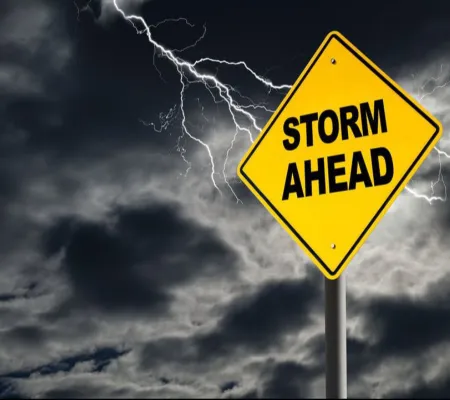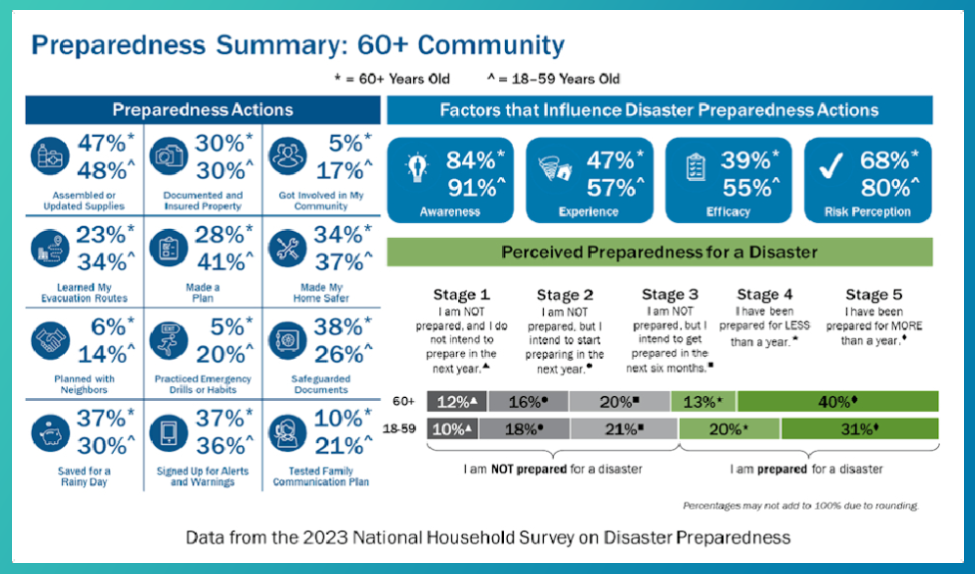Lessen the stress

Most people get ready for the immediate future – they prepare for expected situations that may occur during their day or the coming week. Few actually look ahead to get ready for unexpected situations that might happen further into the future.
According to the Federal Emergency Management Agency (FEMA), about half of all people in the U.S. want to prepare for emergencies but have not yet started. In the Americas and the Caribbean, most individuals with disabilities report not having a personal disaster preparedness plan. It is hard to plan ahead and prepare for the future when all of our focus is on what’s happening today.
June kicks off hurricane season which runs through November. We want to help our communities ease some of the stress that can come when an emergency happens. Here are some steps you can take to be prepared:
Make a plan - Having a plan is the hardest step. You may be thinking, “Where do I begin? I can’t afford to build a kit. I don’t want to scare my kids.” Here are some common questions to think about and links to help you start your journey to making a plan:
- If the power goes out, what does that look like to your family?
- How do I know if my food is still good?
- Do you have working fire alarms (with good batteries)?
- Have you ever talked and practiced a fire drill in your home?
- Where is your water and gas cut-off and electrical breaker box?
- How will you get emergency alerts and warnings?
- If your home is damaged or you need to leave, do you have friends or family you can stay with?
- Can you gather your important papers, batteries, flashlights, hygiene items, games, and other items to start your kit?
- Are your phone numbers backed up in case your phone is damaged or lost?
- Talking with your kids doesn’t have to be scary. Include them in fire drills. Teach them where to go if there is severe weather. Also tell them what to do if they are away from home during an emergency.
Build a kit - Most people already have the supplies needed to build a kit. If some items are missing, start building the kit ahead of time. This allows you to look for sales. Here are some items you may want to include:
- Water – Each family’s water needs may vary. Don’t forget to think about how much water you will need for medical equipment and your pets. Try to buy one gallon of water a month during hurricane season. After that, start drinking and replacing the water to make sure it doesn't go bad.
- Food – If you do not have power, are there items that you like to eat that can store easily in your pantry, cabinets, or kitchen?
- Weather radio - Having a weather radio can give you emergency alerts when cell phone service is out. You can use them to help pass the time when there is no power and they are a reliable source of information. Did you know that there are adaptations to weather radios for deaf, blind and hard of hearing individuals?
- Flashlights - Although batteries can be expensive, flashlights are much safer than using candles. Candles can be a fire risk. Look for deals on batteries for your flashlight ahead of an emergency!
- Whistle - When flooding happens, search and rescue teams may not find you just by listening for your voice. A whistle comes in handy because it uses much less energy than calling out with your voice. Whistles are much louder, increasing your chances of being heard and found.
- Ask others to help - Ask each person you live with to pack their own kits. It’s likely they will pack non-essentials, but it brings people a sense of comfort and control.
- Medical needs – In your kits, be sure to have eyeglasses, contacts, prescriptions, sunscreen, first aid kits, basic over-the-counter medicines and hygiene items.
- Books and games - Time can go by slowly during an emergency without cell phone service, internet, power or contact with other people. Be ready with other activities to help keep everyone calm and to pass the time.
Keep in mind this list suggests a few items to get you started. You may have items unique to you and your family in the event of an emergency.
What should I put my items in? Anything! You can use old backpacks or other bags – they don’t have to be fancy. Backpacks are easy to grab and take with you if you need to leave home in a hurry, such as during a flood or house fire.
Do you have a basic kit in your car? Car safety is always important. It’s best to have a basic kit in your car if your battery dies, if you need a first aid kit, or if you get stuck in traffic and run out of gas.
This may seem like a lot of information. To make preparation easier, take things one step at a time. Collect one item a week, one item a month, or one item a quarter – whatever is best for you. If you see something on the news or social media that tells you bad weather is ahead, you will feel a bit better knowing you have taken steps to be prepared. We urge you to talk with neighbors, family and friends to get ready together!
We’re here to help you get prepared! Trillium’s Community Crisis and Disaster Response team works with local and state resources to help our members and communities get ready for severe weather events and other disasters. Please take advantage of the resources available on the Trillium Roadmap2Ready page.

By Audrey Hart
Head of Regional Behavioral Health
Community Crisis and Disaster Response for Trillium